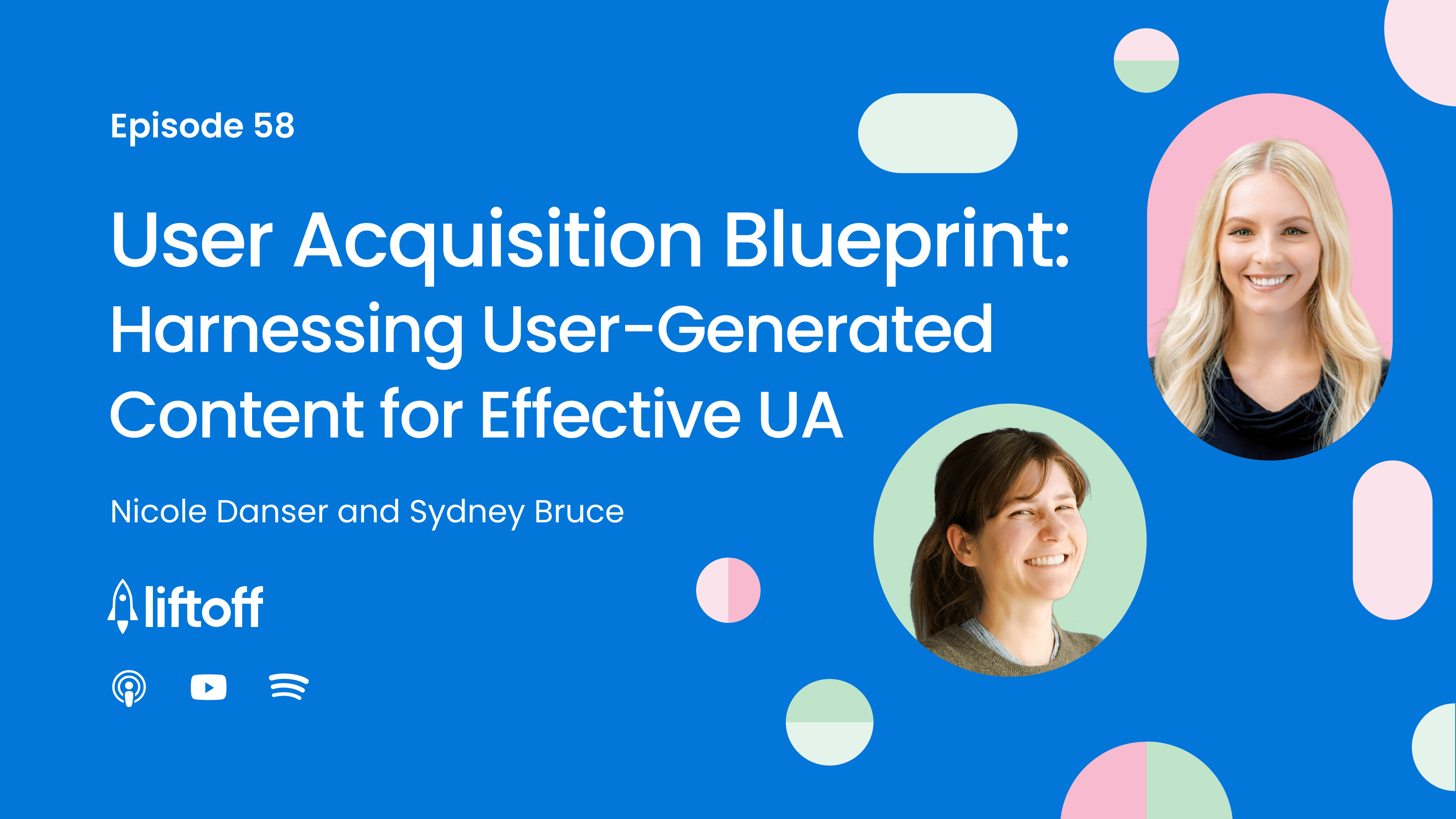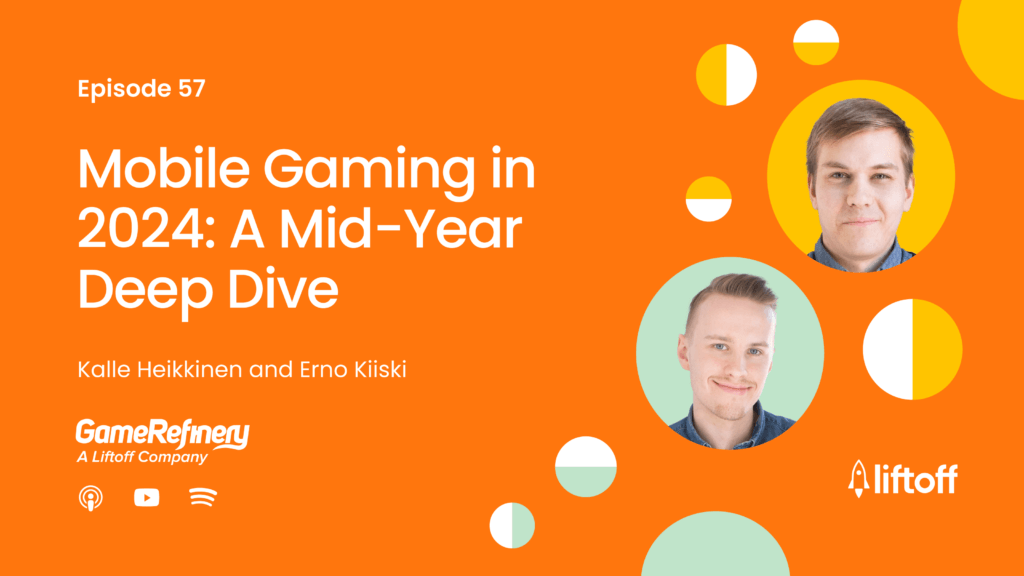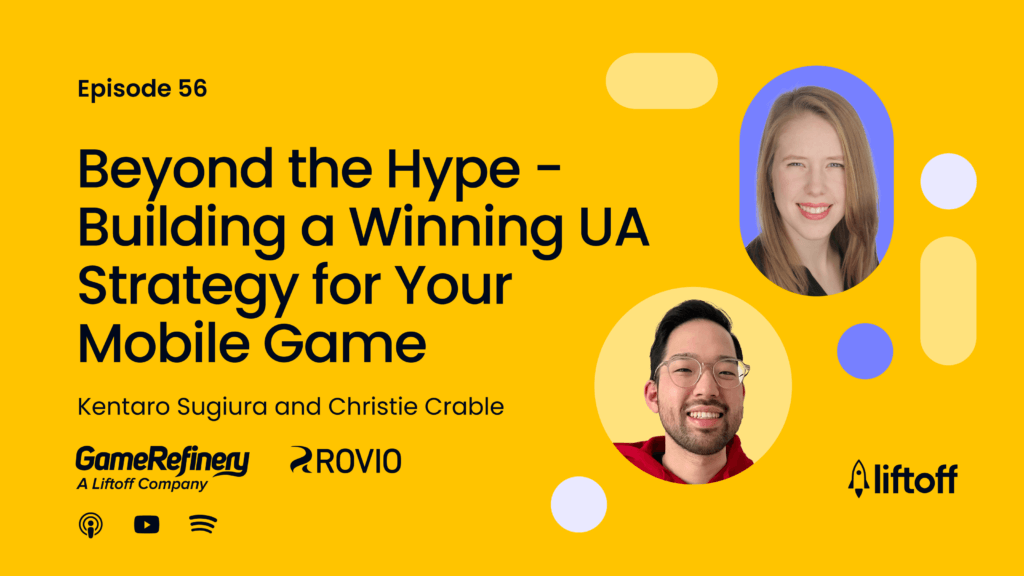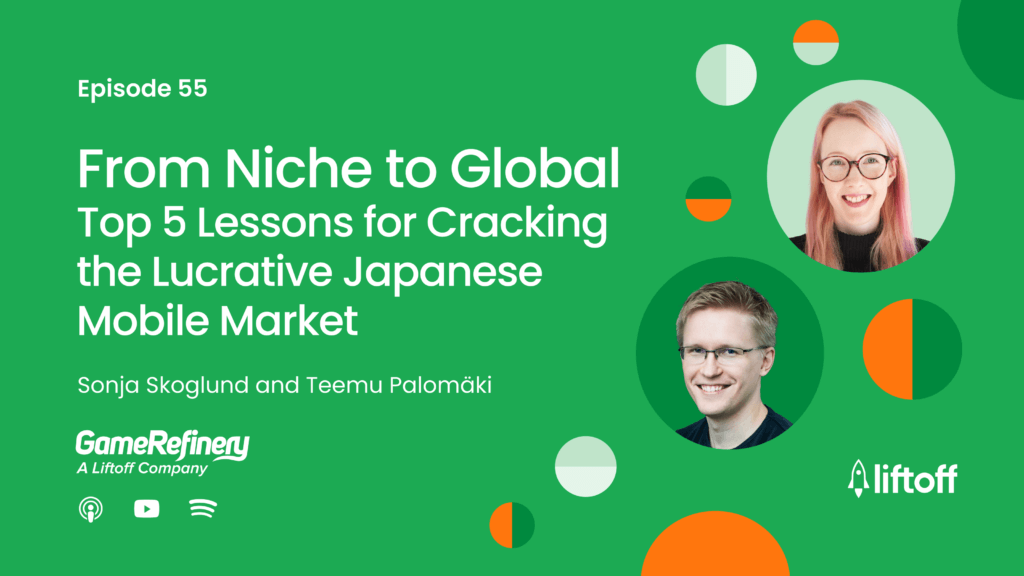Episode 58: User Acquisition Blueprint: Harnessing User-Generated Content for Effective UA
In this episode of the Mobile Games Playbook, we explore the power of UGC to effectively acquire users (UA). UGC is a goldmine for mobile game marketers, but how do you leverage it for maximum impact?
Join our expert guests, Nicole Danser, Senior Manager of Creative Strategy & Production at Liftoff Influence, and Sydney Bruce, Creative Account Strategy—UGC, as they share insights into identifying target audiences and the key components of a successful UA campaign.
By harnessing the power of UGC, you can unlock a cost-effective and authentic way to reach new players and grow your mobile game.
Watch the video recording
Episode Transcript
Introduction
[00:00:00 – 00:01:00]
Jon Jordan: Hello, and welcome to the Mobile Games Playbook. Thanks for tuning in for another episode. This is a podcast all about what makes a great mobile game, what is and isn’t working for mobile game designers and all of the latest trends.
I’m your host, Jon Jordan. Joining me today are two experts who will discuss the topic of user-generated content in producing effective user acquisition strategies.
Welcome to Nicole Danser, a senior manager of creative strategy and production at Liftoff Influence.
Nicole Danser: Hello. It’s good to be here.
Jon Jordan: We also have Sydney Bruce, who is creative account strategy and UGC at Liftoff Influence.
Sydney Bruce: Hey, great to see you. Thanks for having me.
The evolution and importance of user-generated content
[00:01:00 – 00:03:00]
Jon Jordan: When we talk about user-generated content for UA (user acquisition), so basically marketing, what are we talking about? And why is this something that the industry is now talking about? Why is this now important when maybe it wasn’t a couple of years ago?
Nicole Danser: Yeah, I would say four to five years ago, when TikTok wasn’t as prevalent, and there wasn’t, you know, Instagram Reels, testimonial style ads or a skit of some sort did not hit well on mobile advertising platforms. But as TikTok became more ubiquitous, social media platforms with human beings and their faces are now plastered all over the internet.
Mobile advertising platforms can screen those types of ads, and people watch them because they see them everywhere. They’re entertained by them. So, we can use the formats that we see from TikTok, Instagram, and other social media platforms. Put in our value propositions about a specific app and tell an entertaining story while still conveying why an audience should download our app.
Jon Jordan: So I guess it’s interesting that some, something is partly to do with technology, partly to do with the platforms and sort of the content they’re cooking up. And then, over time, that’s sort of like an education process for the audience. Whereas at one time, a few years ago, you could have exactly the same as you’re doing now, but it just wouldn’t work.
Collaboration with clients and identifying the right creators
[00:03:00 – 00:05:00]
Jon Jordan: How do you start doing that process? Because obviously, I assume you have some sort of broad guidelines about what you want them to do. You can give them sort of carte blanche and, obviously, we have games and audiences and how you tie that thing together. So what’s the sort of starting point for these sorts of campaigns?
Sydney Bruce: I think it really depends on the client. For our team, specifically at creative studio Liftoff, there’s a lot of collaboration with the client during the pre-production phase of the UGC process. Along with brand guidelines and any asset requests, we’ll also discuss their user base for the particular app title.
Our advertisers know the audience demographics for their apps, and sometimes they’ll provide us with user personas, which may include gender and age breakdowns, user motivations, or what keeps the user engaged within their app.
Sydney Bruce: I approach these conversations with the clients with a general knowledge of the user demographics anyway because of the Liftoff intelligence platform. I have reviewed the top source app, which is where the ads are being shown, and I probably most likely work with apps and similar verticals. So have a general sense of the type of audience and creator that we want to work with. And then in identifying the right creator, there are several factors that our creator team takes into consideration.
One factor is whether the creator falls into the target user persona for this title. For example, a sports betting app’s core demographic is typically males aged 21 to maybe 35. So we’ll use creators who fit within this demographic to ensure authentic, believable content.
The UGC workflow and flexibility with creators
[00:05:00 – 00:07:00]
Jon Jordan: And in terms of the workflow, you’re asking them to create a custom bit of content. I mean, that’s the UGC bit. So obviously, that’s a much more engaged process than you handing them an ad, which I guess maybe was a lot of the influencer stuff before.
So how does that process work out? Because, I can imagine some creators have their own teams to do that stuff. And some of them probably don’t. So there’s quite a spectrum, I imagine, of how you’re dealing with that.
Nicole Danser: Yeah. I would say there’s a give and take between what the advertiser and the creator need.
If the advertiser has very strict creative flexibility, we’ll have to get the exact script to them and then work with a creator who’s really good at memorizing a script while also making it feel authentic when they’re actually talking about it.
When there’s more creative flexibility, we let the creators have a little bit more fun with the script. We give them a general guideline. There are also specific creators that we seek out when they’re experts in a specific kind of, like, template or format. So there’s the interview on the street style where you need two engaging people who have good mic audio on the street.
Finding the right people for the right format is also an important part of finding creators and matching them up with demographic and brand similarities.
UGC campaign scale, effectiveness, and challenges
[00:08:00 – 00:12:00]
Jon Jordan: And can you give us, I mean, obviously, all these things are very different, but in terms of an average sort of campaign, how many sort of creators would you be working with and how much, because effectively what you’re doing is just saying, When this works, this sort of format is a better way of engaging with an audience than other types of UA. So it’s basically a numbers game. So, roughly how many creators do you need to work with? Can you give a number to that? Or is that just an inane question?
Sydney Bruce: So we have our own creator platform. We have hundreds of creators that we’re working with. We have a dedicated creator team who actually manages the creators personally. They will help coach our creators to make better quality ads.
Jon Jordan: So on, say, a best-performing sort of ad that you’re creating this way, could you say how much more effective it would be than what we might consider a standard sort of UA ad? Would they be twice as good, three times as good, or would you be hoping for them to be more than that?
Nicole Danser: I don’t have stats. Maybe Sydney might, but what I’ve seen a lot of the times with advertisers that don’t have UGC, and then we start making media for them, is that we’ll watch as more and more of our ads get cycled into the testing process. That they’ll hit the top spenders. Sometimes it doesn’t happen, and we have to innovate and figure out new ways to make the ad work, but when UGC comes up against maybe something that’s full gameplay and full user interface, It is more engaging, and it gets more clicks and downloads we’ve seen.
And that’s not to say that it’s all UGC is the star and is doing everything, because we often are deciding, well, there’s a top performing gameplay, we can add that we can stitch within this. We can have the UGC, we can have the creator reacting to the top gameplay.
The role of trends and social media in UGC
[00:13:00 – 00:17:00]
Jon Jordan: Do you think there are any genres that it worked particularly well for? I mean, in my stereotypical way, I’m maybe seeing more female-skewed sort of games because maybe that’s more of the consumption of those sorts of things, but probably I’m totally wrong. Is there any genre that’s better? Can you talk a bit about how it works on that sort of, the type of, game that you’re, that you’re trying to sort of advertise?
Nicole Danser: I mean, in a similarity to sort of a sports betting, something that uses real money gaming of some sort of like Papaya with their solitaire cash, that was one of the examples that I was thinking of when you bring it, we bring in our UGC, and then all of a sudden like top 10 of the ads are all of ours. I think it’s important to have UGC for those ads because you want to show off the ethos and reliability of this app because it’s real money at stake.
Sydney Bruce: I think to add to that, Nicole, I think a good way to look at this is if UGC is not performing for a vertical, we probably just haven’t found the right concept or script or value prop to use yet. And that just requires more testing, just like any creative UGC or non [creative]. It just requires a lot of testing and understanding of the app to know what will push users to hit their goals.
Testing, iteration, and campaign duration
[00:18:00 – 00:19:00]
Jon Jordan: Could you give us an idea of how a campaign runs for a month, and you’d do 10 different variations? Obviously, it will be; all these things could be shorter or longer, but just to get a rough feel of how long these things are going on for and how much you are changing it up. Could you give me an idea about that?
Sydney Bruce: I think a best practice for gathering enough learnings is to test a creative for at least a month. We’ve had instances where a creative might go live, but it doesn’t actually take off and start performing for two weeks, so then, you know, if you were to pause it after two weeks, you would never have gotten the insights. We’ve seen creatives run over a year where we’ve had to extend the license with the creator, so it varies.
Advice for marketers interested in UGC
[00:19:00 – 00:21:00]
Jon Jordan: For the people thinking about UGC for the first time, what are the next steps?
Nicole Danser: Well, if you want to work for Liftoff, we can definitely offer it. Sydney, I think you probably have a slightly more nuanced take.
Sydney Bruce: I think knowing your audience and what works well within your app is important. But the main thing is to be open to testing, be open to experimenting.
Future trends in AI and UGC
[00:21:00 – 00:23:00]
Jon Jordan: Do you have any pointers about how you think the industry is moving? Any trends you think will be particularly supercharged in the next year or so?
Nicole Danser: I’m particularly interested in the collaboration between UGC and interactive ads like Playables. We’ve seen that work in the past quarter where even previously successful interactive ads with just a little bit of UGC response at the end, based on how the ad went for them if they won or lost. The mini-game within the interactive ad—I think that’s definitely going to become more prevalent.
Jon Jordan: Well, thank you very much to Nicole and Sydney for their expertise.
Nicole Danser: Thank you. It was a lovely time.
Jon Jordan: Thanks to you for watching and listening. Do subscribe and we’ll see you next time.






